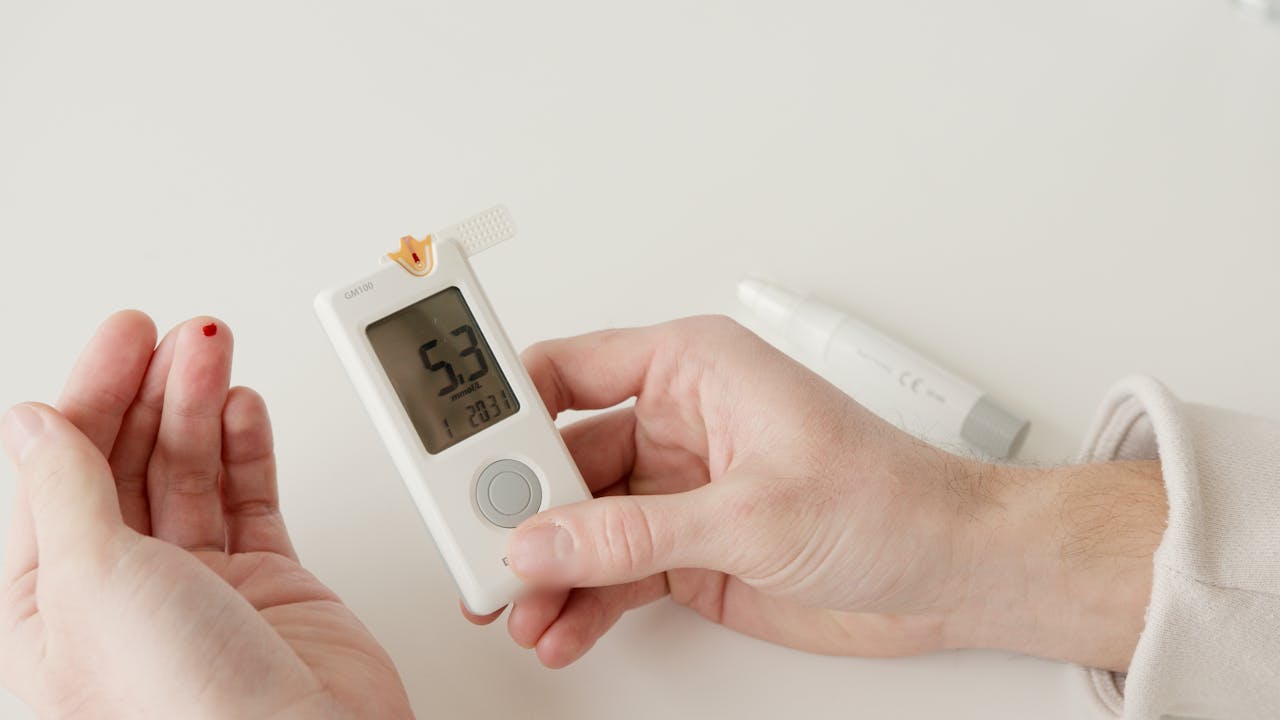
Living with diabetes can be overwhelming, but with the right strategies and mindset, you can lead a healthy, fulfilling life. This guide is designed to give you practical, human-centered tips for managing blood sugar levels effectively.
Whether you’re newly diagnosed or looking for ways to optimize your routine, here are essential steps to help you feel more in control.
Understanding Diabetes and Blood Sugar Basics
Diabetes is a chronic condition where your body either doesn’t produce enough insulin (Type 1) or becomes resistant to it (Type 2). Insulin is a hormone that helps regulate blood sugar, which is your body’s main source of energy. If your glucose levels stay too high or drop too low, it can lead to serious health complications over time.
Key Takeaway: Knowing how insulin and glucose interact is the first step in effective diabetes management.
The Importance of Glucose Monitoring
Glucose monitoring is not just about numbers—it’s about awareness. Regular monitoring helps you understand how different foods, activities, and emotions affect your blood sugar. This insight allows you to make smarter, real-time decisions.
Tips for Monitoring:
- Use a glucometer or Continuous Glucose Monitor (CGM).
- Track patterns in a journal or mobile app.
- Share your data with your healthcare provider.
Crafting a Diabetic Diet That Works for You
There is no one-size-fits-all diabetic diet. The goal is to stabilize blood sugar while enjoying balanced, nutrient-rich meals.
Smart Diabetic Diet Strategies:
- Choose complex carbs like whole grains and legumes.
- Eat lean proteins (chicken, tofu, fish).
- Load up on fiber-rich vegetables.
- Limit sugary drinks and processed snacks.
Real-life tip: Start by replacing one refined food item (e.g., white bread) with a whole-food option (e.g., whole wheat bread).
Insulin Management for Stable Energy
If you’re on insulin therapy, timing and dosage are crucial. Insulin management is about more than just taking a shot; it involves syncing meals, activity, and dosage for optimal control.
Insulin Tips:
- Understand the difference between long-acting and rapid-acting insulin.
- Always carry a fast-acting carb snack in case of hypoglycemia.
- Avoid skipping meals after taking insulin.
Daily Routine and Lifestyle Changes
Your lifestyle choices have a huge impact on your blood sugar levels. Small, consistent habits can bring significant long-term benefits.
Key Lifestyle Changes:
- Aim for 30 minutes of movement daily (even walking counts).
- Sleep at least 7-8 hours per night.
- Reduce stress through mindfulness or hobbies.
- Stay hydrated and avoid sugary beverages.
Managing Type 2 Diabetes: Realistic Tips
Type 2 diabetes is often linked to lifestyle and can sometimes be managed or even reversed with proper intervention.
Type 2 Diabetes Tips:
- Set realistic goals: lose 5-10% of body weight if needed.
- Cook at home more often to control ingredients.
- Partner with a diabetes educator or health coach.
- Celebrate small victories like lower A1C levels or reduced medication.
Recognizing and Handling Highs and Lows
Hyperglycemia (high blood sugar): Symptoms include fatigue, thirst, and frequent urination.
Hypoglycemia (low blood sugar): Symptoms include shakiness, confusion, and irritability.
What to Do:
- Treat low blood sugar immediately with 15g of fast-acting carbs (e.g., juice or glucose tablets).
- Contact your healthcare provider if you frequently experience highs or lows.
Exercise: A Powerful Tool for Blood Sugar Control
Exercise improves insulin sensitivity and helps your body use glucose more efficiently. But consistency matters more than intensity.
Activity Ideas:
- Brisk walking or cycling
- Light resistance training
- Stretching or yoga
Tip: Always check your blood sugar before and after exercising to understand your body’s response.
Emotional and Mental Well-Being
Living with diabetes can be emotionally taxing. Anxiety, burnout, and frustration are common but manageable with support.
Support Strategies:
- Join a diabetes support group (online or local).
- Talk to a therapist or counselor.
- Practice journaling to process emotions.
Remember, mental wellness is just as important as physical health.
Partnering With Your Healthcare Team
Your doctor, diabetes educator, and nutritionist are your allies. Regular check-ins can help fine-tune your management plan.
Smart Practices:
- Keep a list of questions for appointments.
- Review your A1C, cholesterol, and blood pressure levels regularly.
- Ask about new treatment options or tools like CGMs.
Unique Tips and Research-Based Insights
Tip 1: Leverage the Power of Timing Your Meals (Chrono-Nutrition)
Recent studies show that eating earlier in the day and aligning meals with your body’s natural circadian rhythm can improve insulin sensitivity and blood sugar control. Aim to finish your last meal at least 3 hours before bedtime.
Tip 2: Incorporate Cinnamon as a Natural Blood Sugar Modulator
Clinical trials have suggested that cinnamon can reduce fasting blood glucose and improve lipid profiles in people with Type 2 diabetes. Adding 1-2 teaspoons daily (in smoothies, oatmeal, or tea) may offer modest benefits.
Tip 3: Mindful Eating to Prevent Blood Sugar Spikes
Eating slowly, chewing thoroughly, and focusing on your food can lower post-meal glucose spikes. Mindful eating helps regulate digestion and reduces overeating, which supports blood sugar stability.
Tip 4: Use Technology to Your Advantage
Apps and wearable tech for logging meals, monitoring activity, and reminders can dramatically improve compliance and awareness. Apps like MySugr, Glucose Buddy, and Apple Health are popular for diabetes management.
Final Thoughts
Managing diabetes isn’t about perfection, it’s about progress. With knowledge, consistent habits, and the right support, you can take charge of your health and lead a vibrant life.
Use this complete blood sugar guide as your roadmap, and remember: small steps make a big difference.
